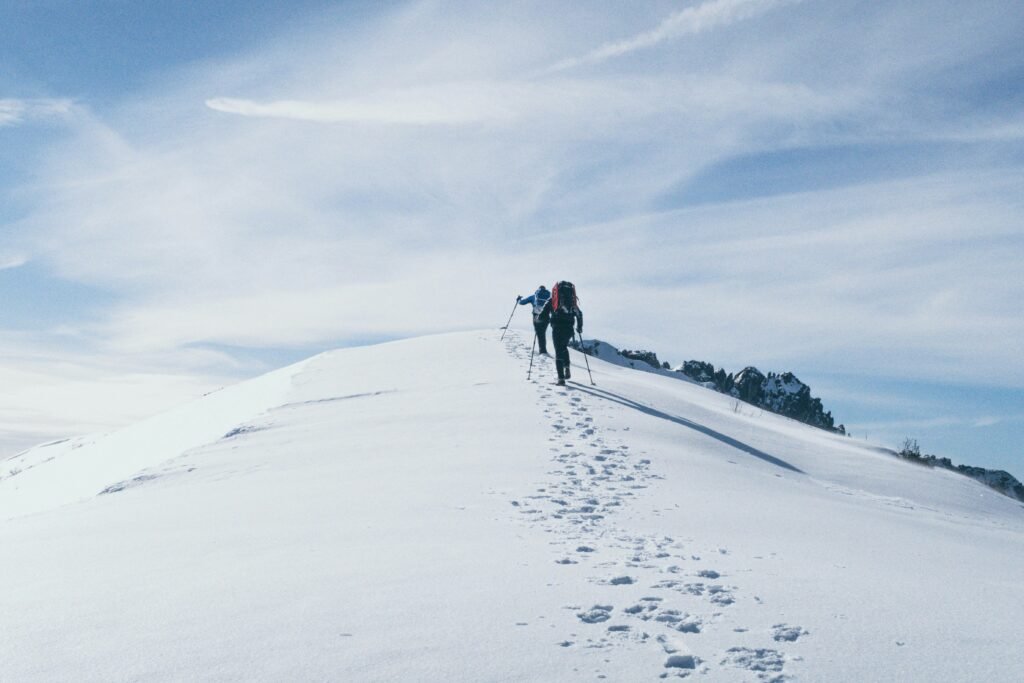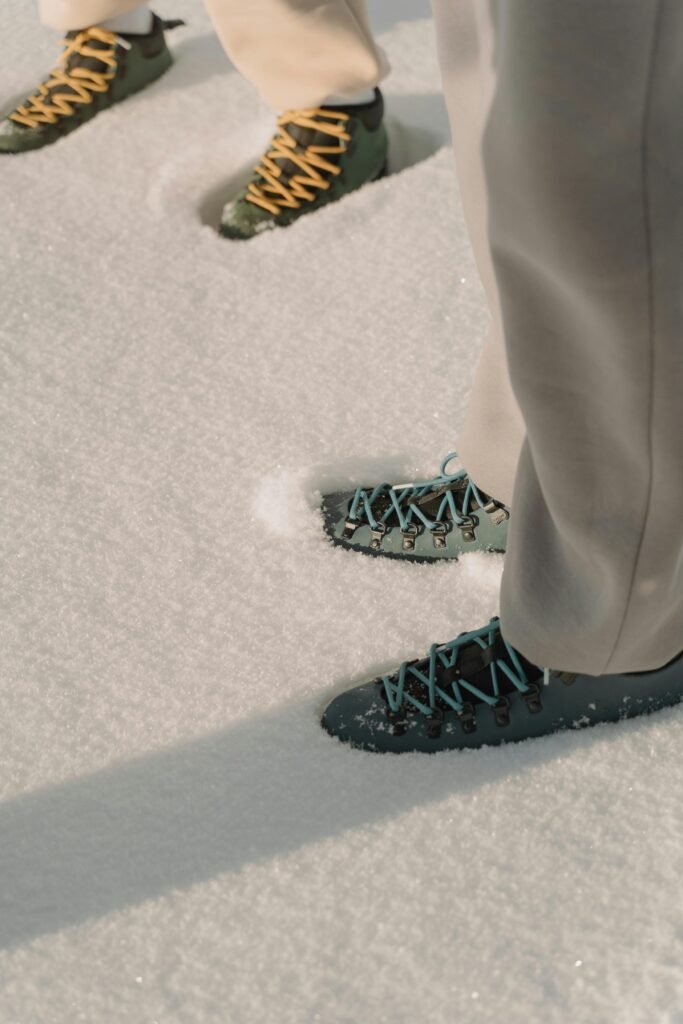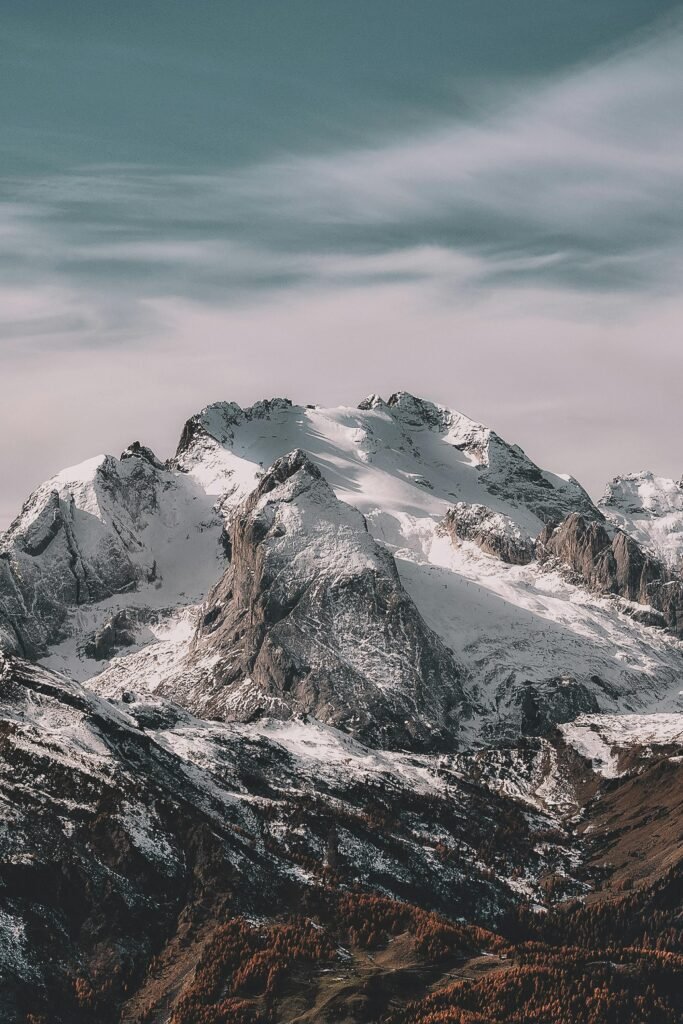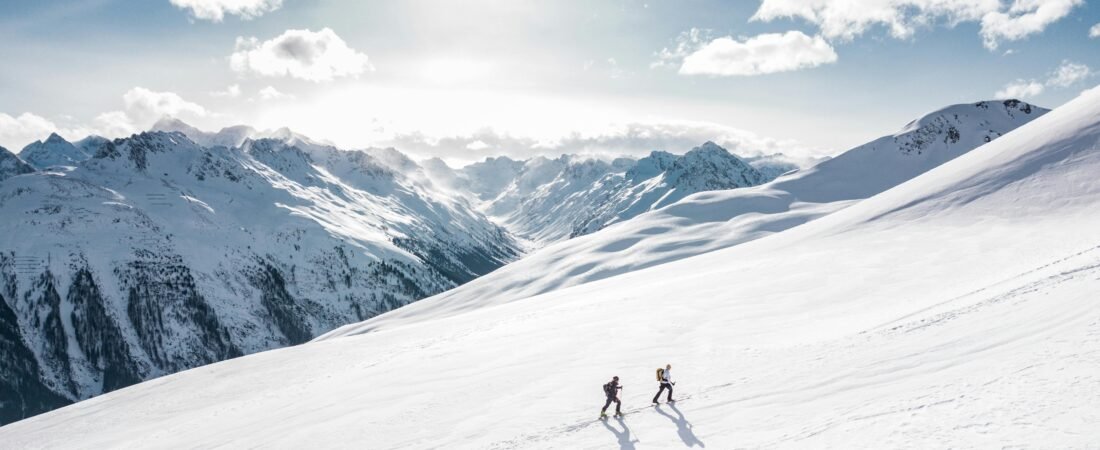Last updated: October 2025
Picture this: you’re standing on a snow-covered trail, your breath forming small clouds in the crisp air. The world is hushed under a pristine white blanket, and every sound is muffled except for the satisfying crunch of snow beneath your boots. There’s something almost magical about winter hiking—but it’s not without its challenges.
If you’ve been hesitant to explore trails during the colder months, you’re not alone. Winter hiking might seem intimidating at first, but with the right preparation, it becomes one of the most rewarding outdoor experiences you can have. This comprehensive guide will walk you through everything you need to know about cold weather hiking, from essential gear to safety protocols that could save your life.
*This post may contain affiliate links. If you use them, I may earn a small commission at no extra cost to you.
Table of Contents
Why Winter Hiking is Worth the Extra Effort
The Benefits That Keep Us Coming Back
Stunning Winter Landscapes
Snow transforms familiar trails into otherworldly scenes. Frozen waterfalls become crystalline sculptures, and trees heavy with snow create natural archways. The low winter sun casts long shadows and golden light that photographers dream about.
Fewer Crowds, More Solitude
Summer’s packed trailheads become peaceful parking lots in winter. You’ll often have entire trails to yourself, offering a meditative experience that’s increasingly rare in popular hiking destinations.
Better Wildlife Tracking
Fresh snow becomes nature’s journal. You’ll spot tracks from deer, foxes, rabbits, and birds—a window into the secret lives of winter wildlife that summer hiking never reveals.
Physical and Mental Health Boost
Studies show that winter outdoor exercise combats seasonal affective disorder (SAD) while building cold-weather resilience. The combination of cardiovascular exercise and exposure to natural daylight helps regulate circadian rhythms and improve mood.
Building True Wilderness Skills
Winter hiking forces you to level up your outdoor competency. You’ll develop navigation skills, weather reading abilities, and self-reliance that translate to all-season hiking confidence.
The Unique Challenges of Hiking in Snow
Let’s be honest—winter hiking isn’t just summer hiking with a jacket. Understanding these challenges helps you prepare properly:
1. Temperature Regulation is Tricky
You’ll overheat while moving but chill instantly when you stop. This constant battle requires active management of your layers throughout the hike.
2. Hidden Trail Hazards
Snow conceals roots, rocks, and holes. What looks like solid ground might be a snow bridge over a creek. Ice patches hide under innocent-looking powder.
3. Shorter Daylight Hours
In December, you might have only 8-9 hours of daylight. Factor in early sunsets, and that 6-mile hike suddenly has a much tighter time window.
4. Rapid Weather Changes
Bluebird skies can turn to whiteout conditions in under an hour. Winter storms are less predictable and more dangerous than summer thunderstorms.
5. Navigation Difficulties
Snow buries trail markers, cairns disappear, and footprints might lead you astray (not everyone knows where they’re going!). Your phone’s GPS battery drains faster in cold weather too.
6. Physical Demands Increase
Walking through snow—especially deep powder—requires 50% more energy than summer hiking. Add in the weight of winter gear, and you’re working much harder.
7. Dehydration Sneaks Up
Cold air is dry air. You lose moisture with every breath, but the cold suppresses your thirst response. Many winter hikers don’t realize they’re severely dehydrated until symptoms appear.
Essential Winter Hiking Gear: What You Actually Need

Let’s break down the gear that separates a miserable slog from an enjoyable adventure. I’ve included specific product recommendations that I’ve personally tested or come highly recommended by the winter hiking community.
Clothing: The Three-Layer System
Full article on layering system: How to Layer Clothes for Hiking
Base Layer (Moisture Management)
Your base layer’s job is to wick sweat away from your skin. Cotton is your enemy here—it holds moisture and will make you hypothermic.
Recommended Products:
- Smartwool Merino 250 Base Layer – The gold standard for winter base layers. Merino wool naturally regulates temperature and resists odor.
- Patagonia Capilene Thermal Weight – Synthetic alternative that dries faster than wool and works well for high-output activities.
Mid Layer (Insulation)
This layer traps warm air and provides the bulk of your warmth.
Recommended Products:
- Columbia Steens Mountain Fleece – Versatile, breathable, and durable for active hiking.
- Mountain Hardwear Ghost Whisperer Down Jacket – Ultralight, packable, and incredibly warm for your lunch breaks.
- Arc’teryx Atom LT Hoody – Synthetic insulation that works even when damp; my personal choice for shoulder-season conditions.
Outer Layer (Weather Protection)
Your shell keeps wind, rain, and snow out while allowing sweat vapor to escape.
Recommended Products:
- Arc’teryx Beta AR Jacket – Premium investment piece with bombproof Gore-Tex Pro construction.
- REI Co-op XeroDry GTX Jacket – Budget-friendly option with solid waterproofing.
- Outdoor Research Foray Pants – Waterproof pants that don’t sound like you’re wearing a trash bag.
Essential Accessories
Don’t overlook these small items—they make a huge difference:
Recommended Products:
- Black Diamond Mercury Mitts – Insulated mittens keep fingers warmer than gloves; these have removable liners.
- Smartwool PhD Socks – Merino blend with strategic cushioning; I always carry an extra pair.
- Outdoor Research Balaclava – Protects face, neck, and ears in one piece.
- Buff Original Multifunctional Headwear – Incredibly versatile; can be a neck gaiter, hat, face mask, or headband.
Footwear & Traction: Your Foundation

Winter Boots
Recommended Products:
- Salomon Quest 4D GTX – My top pick for winter day hikes. Insulated, waterproof, and supportive.
- Keen Revel IV High Polar – Rated to -40°F for extreme cold conditions.
Gaiters
Keep snow out of your boots and your pant legs dry.
Recommended Product:
- Outdoor Research Crocodile Gaiters – Bombproof construction that’ll last for years.
Traction Devices
This is non-negotiable for winter hiking safety.
Recommended Products:
- Kahtoola MICROspikes – The industry standard for icy trails. Easy on/off and they stay put.
- Black Diamond Contact Crampon – Step up to these for steeper, icier terrain.
Pack & Equipment
Daypack
Recommended Product:
- Osprey Talon 22 – Perfect size for winter day hikes with attachment points for trekking poles and ice axes.
Hydration
Recommended Products:
- Hydro Flask 32oz Wide Mouth – Keeps water liquid for hours in freezing temps.
- CamelBak Crux Reservoir with Insulated Tube – For longer hikes where you need hands-free hydration.
- Stanley Classic Vacuum Thermos – Nothing beats hot tea or soup on a winter summit.
Navigation
Recommended Products:
- Garmin inReach Mini 2 – GPS communicator with SOS feature for backcountry safety.
- Suunto MC-2 Compass – Reliable backup navigation that never needs batteries.
Lighting
Recommended Product:
- Petzl Actik Core Headlamp – Rechargeable with 450 lumens; also accepts AAA batteries as backup.
Emergency & First Aid
Recommended Products:
- Adventure Medical Kits Ultralight/Watertight .7 – Comprehensive kit that won’t weigh you down.
- SOL Emergency Bivy – Weighs 3.8 oz and could save your life if you need emergency shelter.
- UCO Stormproof Matches – Because your lighter might fail in extreme cold.
Trekking Poles
Often overlooked but incredibly helpful for stability on snow and ice.
Recommended Product:
- Black Diamond Trail Pro Shock – Adjustable, durable, with shock absorption for descents.
Winter Hiking Safety: Tips That Could Save Your Life
Before You Go: Planning & Preparation
Check Multiple Weather Sources
- National Weather Service for official forecasts
- Mountain-Forecast.com for mountain-specific conditions
- Avalanche.org for avalanche danger ratings (if applicable)
File a Trip Plan Tell someone exactly where you’re going, which trail, expected return time, and when to call for help if you don’t check in.
Know Your Limits Winter is not the time to push your boundaries. Choose trails that are 30-40% easier than your summer capabilities.
On the Trail: Active Risk Management
The 10 Essentials (Winter Version)
- Navigation (map, compass, GPS)
- Headlamp with extra batteries
- Sun protection (yes, winter sun reflects off snow!)
- First aid kit plus blister treatment
- Knife or multi-tool
- Fire starter and waterproof matches
- Emergency shelter (bivy sack)
- Extra food (20% more than you think you need)
- Extra water and purification method
- Extra clothing (full change of base layer)

Pace Yourself Properly
Start slow—ridiculously slow. You should be able to hold a conversation without breathing hard. If you’re sweating heavily, slow down and vent your layers.
Take Smart Breaks
Stop every 45-60 minutes. When you stop moving, your body cools fast:
- Find a windbreak
- Put on your puffy jacket immediately
- Eat a high-calorie snack
- Drink water (force yourself even if not thirsty)
- Check everyone’s fingers and toes for numbness
Stay Hydrated
Aim for 16-20 oz of water per hour. Store bottles upside down (water freezes from the top) and keep them in insulated sleeves.
More on hydration: Hiking Hydration Guide: How Much Water Do I Need on the Trail?
Recognizing & Responding to Cold Injuries
Hypothermia Warning Signs
- Shivering (early stage)
- Clumsiness and stumbling
- Confusion or slurred speech
- Drowsiness
- Shivering stops (danger sign—body is shutting down)
Response: Stop immediately. Add all extra layers. Get into emergency shelter. Provide warm (not hot) sweet drinks. If severe, call for help.
Frostbite Warning Signs
- Numbness in extremities
- White, grayish, or waxy-looking skin
- Hard or frozen tissue
- Blistering (if rewarmed)
Response: Don’t rub the area. Protect from further exposure. Rewarm gradually with body heat (armpit for fingers). Seek medical attention—frostbite damage can be serious.
Snow Blindness Prevention
UV radiation reflects off snow and can burn your corneas. Always wear sunglasses or goggles with 99-100% UVA/UVB protection.
Recommended Product:
- Julbo Explorer 2.0 Glacier Glasses – Side shields and Category 4 lenses for high-altitude snow fields.
Navigation in Winter Conditions
Snow transforms landscapes. That obvious trail junction? Buried. Those cairns marking the route? Hidden under 3 feet of powder. Here’s how to navigate confidently:
Pre-Hike Preparation
- Download offline maps to your phone (AllTrails, Gaia GPS, or CalTopo)
- Study the route on Google Earth to identify terrain features
- Note compass bearings for key waypoints
- Check recent trip reports for current conditions
On-Trail Navigation
- Track your progress constantly—don’t assume you’re on trail just because there are footprints
- Use terrain association: identify ridges, valleys, streams on your map and match them to what you see
- Take compass bearings at major junctions and write them on your map
- Turn back early if conditions deteriorate or you lose the trail
Winter Navigation Tools Recommended Products:
- Garmin GPSMAP 67i – Dedicated GPS unit with satellite communication
- Anker PowerCore 10000 PD – Keep your phone charged in an interior pocket
Advanced Winter Skills (For Backcountry Adventurers)
As you gain confidence, you might want to tackle more challenging winter terrain. These skills require training and practice:
Snowshoeing
When snow exceeds 6-8 inches, snowshoes distribute your weight and keep you on top of powder.
Recommended Product:
- MSR Evo Trail Snowshoes – Affordable entry-level shoes for hiking trails.
- MSR Lightning Ascent – For steep, technical terrain.
Mountaineering Basics
If you’re eyeing snow-covered peaks, you need:
- Ice axe skills (self-arrest, plunge stepping)
- Crampon proficiency
- Rope work for glaciated terrain
Take a course: AMGA-certified guides offer winter mountaineering courses. Also check out resources from the American Alpine Club.
Avalanche Awareness
This is non-negotiable for backcountry winter travel. Take an AIARE Level 1 course at minimum.
Recommended Products:
- Mammut Barryvox S Avalanche Beacon
- Lifeline-4016 Aluminum Sport Utility Shovel
- Black Diamond QuickDraw Probe Tour
Essential Resources:
- Avalanche.org – Daily avalanche forecasts
- AIARE.org – Find avalanche education courses
- “Staying Alive in Avalanche Terrain” by Bruce Tremper (book)
Planning Your First Winter Hike: A Step-by-Step Guide
Week Before:
- Check long-range weather forecast
- Research the trail (AllTrails, local hiking groups)
- Read recent trip reports
- Gather and test all gear
Day Before:
- Recheck weather and avalanche conditions
- Charge all electronics
- Pack your bag (see checklist below)
- File your trip plan with a friend
- Get a good night’s sleep
Morning Of:
- Eat a substantial breakfast (oatmeal with nuts and fruit)
- Check weather one final time
- Dress in base layer + light mid layer for the approach
- Bring extra layers in your pack
Beginner-Friendly Winter Trails (Search these for trails near you)
- Look for trails labeled “easy” or “moderate” in summer
- Choose south-facing slopes (more sun, less ice)
- Stay below treeline initially
- Pick loops or out-and-back trails under 4 miles
- Avoid avalanche terrain
Complete Winter Day Hike Checklist
Clothing:
- [ ] Moisture-wicking base layer (top & bottom)
- [ ] Insulating mid-layer (fleece or light down)
- [ ] Waterproof/windproof shell jacket
- [ ] Waterproof shell pants
- [ ] Insulated winter hiking boots
- [ ] Gaiters
- [ ] Wool or synthetic hiking socks + extra pair
- [ ] Insulated gloves or mittens + liner gloves
- [ ] Warm hat
- [ ] Balaclava or neck gaiter
- [ ] Sunglasses with UV protection
Footwear/Traction:
- [ ] Microspikes or crampons
- [ ] Trekking poles
Navigation/Safety:
- [ ] Map (paper, waterproof)
- [ ] Compass
- [ ] GPS device or phone with offline maps
- [ ] Headlamp + extra batteries
- [ ] First aid kit
- [ ] Emergency bivy or space blanket
- [ ] Fire starter and matches
- [ ] Knife or multi-tool
- [ ] Whistle
Hydration/Nutrition:
- [ ] Insulated water bottles (2)
- [ ] Thermos with hot beverage
- [ ] High-calorie snacks (nuts, bars, chocolate)
- [ ] Emergency extra food
Optional But Recommended:
- [ ] Sunscreen (SPF 30+)
- [ ] Lip balm with SPF
- [ ] Small repair kit (duct tape, safety pins)
- [ ] Portable battery pack
- [ ] Hand/toe warmers
- [ ] Sit pad for breaks
Winter Hiking Resources: Where to Learn More
Educational Resources:
- REI Expert Advice – Free articles on winter hiking
- National Outdoor Leadership School (NOLS) – Courses on winter travel
- Mountaineers Books – “Mountaineering: The Freedom of the Hills”
- Andrew Skurka’s blog – Practical advice from an expert
Weather & Conditions:
- Weather.gov – National Weather Service
- Mountain-Forecast.com – Mountain-specific forecasts
- Avalanche.org – Avalanche conditions and education
Trail Information:
- AllTrails – User reviews and recent conditions
- HikingProject.com – Trail descriptions and GPS tracks
- Local hiking clubs and Facebook groups – Real-time beta
Online Communities:
- r/CampingandHiking – Reddit community with winter hiking threads
- r/Ultralight – Gear advice and trail reports
- Instagram hashtags: #winterhiking #winterbackpacking
Gear Reviews:
- OutdoorGearLab – Independent testing and reviews
- Section Hiker – Detailed gear analysis
- REI Co-op Journal – Expert advice and gear guides
What should I wear for winter hiking?
Wear moisture-wicking base layers, insulating mid-layers, and a waterproof, windproof outer layer. Don’t forget warm socks, gloves, and a hat.
How do I keep my water from freezing during a hike?
Use an insulated bottle or store water bottles upside down in your pack, as water freezes from the top down.
Are there special safety tips for winter hiking?
Yes, always check the weather, carry navigation tools, let someone know your plans, and bring extra food, water, and emergency gear.
What gear is essential for winter hiking?
Essential gear includes traction devices (like microspikes), trekking poles, a headlamp, emergency blanket, and a map or GPS.
How can I stay safe from hypothermia and frostbite?
Stay dry, layer your clothing, take regular breaks, and watch for early signs like numbness or shivering.
Final Thoughts: Embrace the Magic of Winter
Winter hiking isn’t about conquering peaks or racking up miles—it’s about experiencing nature in its quietest, most contemplative season. Yes, it requires more gear, more planning, and more respect for the environment. But the rewards are immeasurable.
There’s something transformative about returning from a winter hike. You’ll feel accomplished, invigorated, and more connected to the natural world. The challenges you overcome—the cold, the navigation, the physical demands—build real confidence that carries into every season.
Start small. Choose a familiar trail for your first winter outing. Go with experienced friends if possible. Build your skills and comfort level gradually. Before long, you’ll find yourself craving those crisp winter mornings and the crunch of snow beneath your boots.
The trails are waiting, quieter and more beautiful than ever. Layer up, pack smart, and discover why winter hiking becomes an obsession for those who dare to try it.
Stay safe out there, and happy winter trails!
Disclosure: This post contains affiliate links. If you purchase through these links, we may earn a small commission at no extra cost to you. We only recommend products we genuinely believe in.
Related Articles:

Leave a Reply